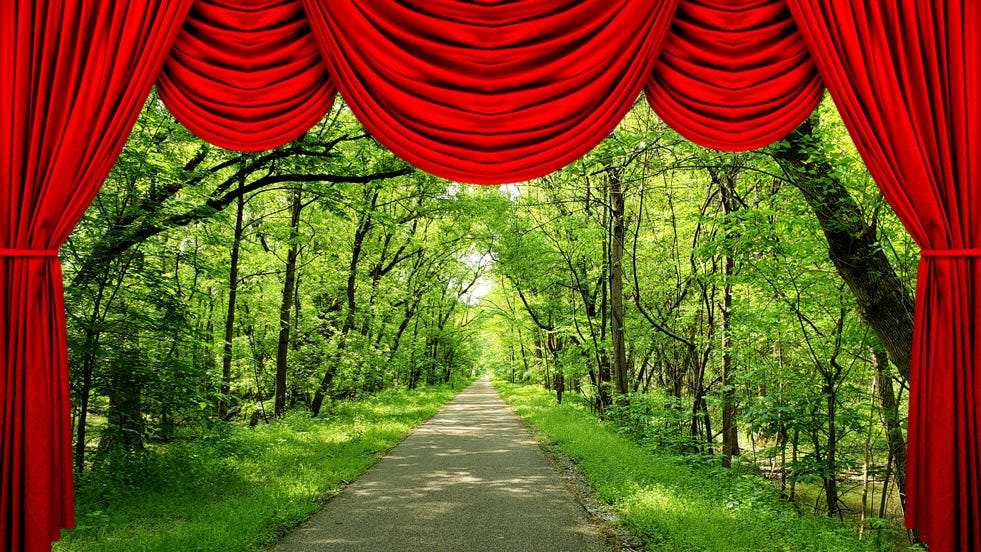A view of the trail from the back of the house
Six often overlooked things happening behind the scenes
Hiking, cycling, and visiting the trail have similarities to attending a play. The front of the house is visible while the back of the house is invisible to the audience. Let’s explore six trail back-of-house going-ons.
An army ensures a smooth, clear trail.
The trail surface is always under attack. Many people toil year-round behind the scenes to counter Mother Nature's unrelenting forces. Fallen trees, branches, roots, and leaves must be managed. Varmints leave dangerous holes to be filled. Water erodes and cracks the surface. The trail is susceptible to water’s force. Thank trail workers for their efforts, often unpaid.
Tackling difficult discussions.
Trail builds and expansions deal with property rights disputes, bad perceptions of trail users, and a perceived negative impact on the neighborhood. Once built, trails deal with complaints of noisy and inconsiderate visitors, encroachments on neighboring property, disrespect of the environment, and vandalism. Trail organizations address these concerns to be friendly neighbors. Help them by being a good visitor.
Your trail love is needed.
Trails positively impact people and communities. Support trails through levies that fund them. Trail staff and volunteers work behind the scenes, on the trail, and at community events to share the love of trails. Consider volunteering. There are volunteer opportunities for everyone. Give generously to appeals for amenities that need funding beyond the budget.
Building a trail is not that simple.
People question why abandoned railways are not trails. Ownership of the right of way is a major barrier. Abandoned rails often return to the property owner. It is difficult to piece together a trail with dozens of landowners. Support the work of trail organizations with landowners to overcome objections and see the value to the community.
Trails work to provide camping.
Some bicycle tourists want to camp as part of their experience. I shared the obstacles faced in providing trailside camping in a previous newsletter. Trails acknowledge that need and work to make it happen. It is not an easy task. Local regulations, community concerns, lack of sufficient green space, and trail and camper safety come into play. Be patient and know you have been heard.
Trails look to the future.
Trails come to life as part of economic revitalization, expansion of recreational opportunities, active transportation efforts, and historical preservation. Trails focus on the future as more people head to the trail, communities grow or seek growth opportunities, trails connect to other trails and communities, and society acknowledges the outdoors's mental and physical health benefits. Trails work to meet these needs to be an integral part of this progress.
This is a sample of what goes on in the trail’s back-of-the-house.
Tom on the Trails



